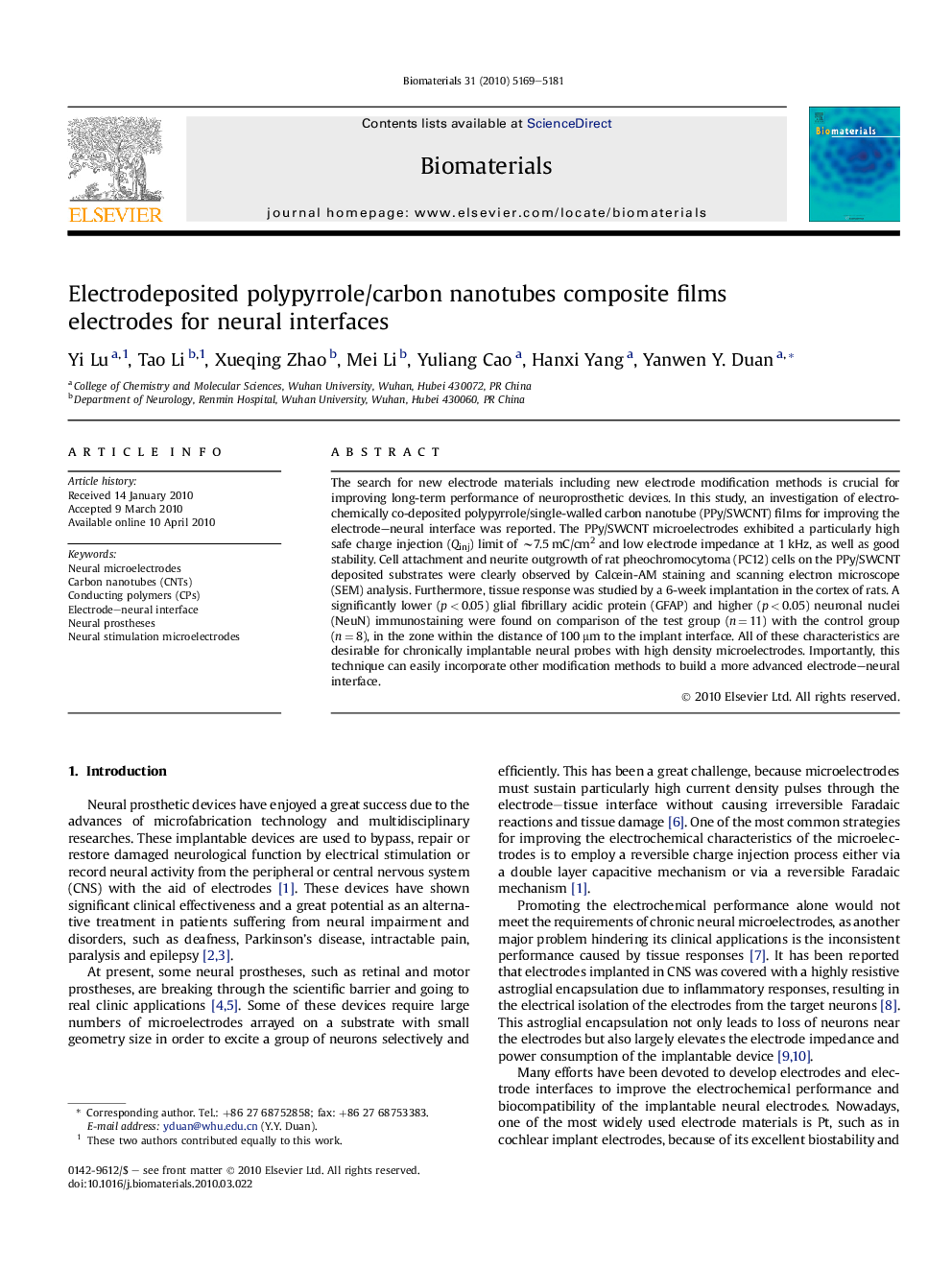| Article ID | Journal | Published Year | Pages | File Type |
|---|---|---|---|---|
| 8380 | Biomaterials | 2010 | 13 Pages |
The search for new electrode materials including new electrode modification methods is crucial for improving long-term performance of neuroprosthetic devices. In this study, an investigation of electrochemically co-deposited polypyrrole/single-walled carbon nanotube (PPy/SWCNT) films for improving the electrode–neural interface was reported. The PPy/SWCNT microelectrodes exhibited a particularly high safe charge injection (Qinj) limit of ∼7.5 mC/cm2 and low electrode impedance at 1 kHz, as well as good stability. Cell attachment and neurite outgrowth of rat pheochromocytoma (PC12) cells on the PPy/SWCNT deposited substrates were clearly observed by Calcein-AM staining and scanning electron microscope (SEM) analysis. Furthermore, tissue response was studied by a 6-week implantation in the cortex of rats. A significantly lower (p < 0.05) glial fibrillary acidic protein (GFAP) and higher (p < 0.05) neuronal nuclei (NeuN) immunostaining were found on comparison of the test group (n = 11) with the control group (n = 8), in the zone within the distance of 100 μm to the implant interface. All of these characteristics are desirable for chronically implantable neural probes with high density microelectrodes. Importantly, this technique can easily incorporate other modification methods to build a more advanced electrode–neural interface.
